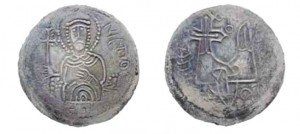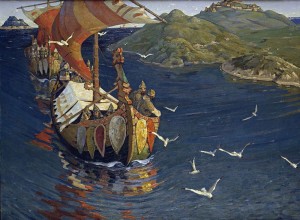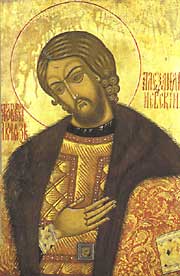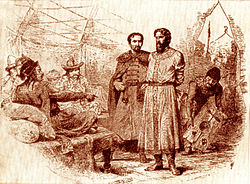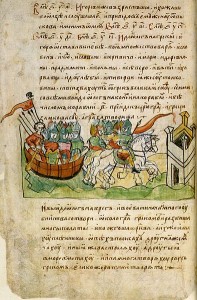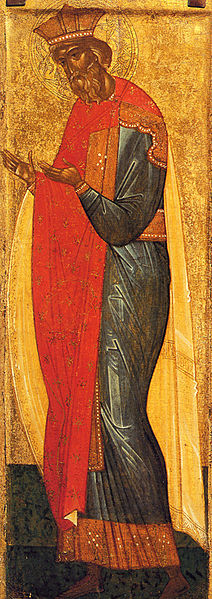
Vladimir I, also known as Vladimir the Great (Norse – Volodmyr) was one of the most influential Russian rulers in history. Born in 958, he was the son of Sviatoslav who died in 972. Vladimir’s brother Yaropolk assumed the throne violently by killing their other brother Oleg. Forced to flee to Novgorod, Vladimir hired a band of Varangian mercenaries to help him overthrow Yaropolk.
In June of 980, Vladimir seized the capital in Kiev with the help of the boyar Blud who turned on Yaropolk who was eventually captured and killed. Once settled in his role as Grand Prince, he began to expand Kievan influence by attacking the Bulgars, pushing towards the Polish border in Galicia and northwest towards Lithuania. On his way, the Grand Prince attacked the land of Polotsk, whose Prince refused Vladimir’s request for his daughter Rogneda in marriage. Not one to be told no, the Kievan prince took the young woman anyway.
This was not to be the only wife or concubine that the pagan Prince had. Some estimates believe he had over 800 women in his service. While the country had a smattering of Christians throughout the land due to his grandmother Olga’s influence, paganism was still the religion of the land. Vladimir promoted the Perun, who was the god of thunder as the lead diety. Human sacrifice was the norm until the Grand Prince began to see a growing population of Christians. He saw a political opening to expand his power base but he had to act prudently and wisely.
According to the Primary Chronicle, he sent emissaries to the centers of a number of religions to bring back information about each. The reports on the Jewish, Catholic, Muslim and Orthodox religions were brought back. At the time, Constantinople was the seat of the Orthodox religion as well as being the capital of the most powerful civilization in the world, Byzantium.
It is said that Vladimir chose Orthodoxy because of divine inspiration but it is likely because of political benefits of being allied with such a great power. He decided to press the issue by attacking the Byzantine city of Chersonesos and demanded the hand of the Emperor Basil II’s sister, Anna. This was an impossible request as the Grand Prince was still a pagan. To make the deal, Vladimir was baptized in Cherson, taking the name Christian name Basil and Anna was sent to be his wife.
On his return to Kiev, the Grand Prince ordered all pagan statues destroyed and the people mass converted to Orthodox Christianity under threat of death. His conversion of the people was one of the most important events in Russian history. Vladimir’s rule marks the end of the Varangian era and the beginning of the Christian era which was to last until 1917.
